Okay, so is there even a good water bottle, to begin with? All water bottles are bad for the environment and hold some BPA poisoning risks. But some are even worse than others. You may think that brands don’t matter, but they do!
Worst bottled waters: store-brand bottled water
These water bottles are typically cheap because they do not put vitamins and minerals into their bottled water.
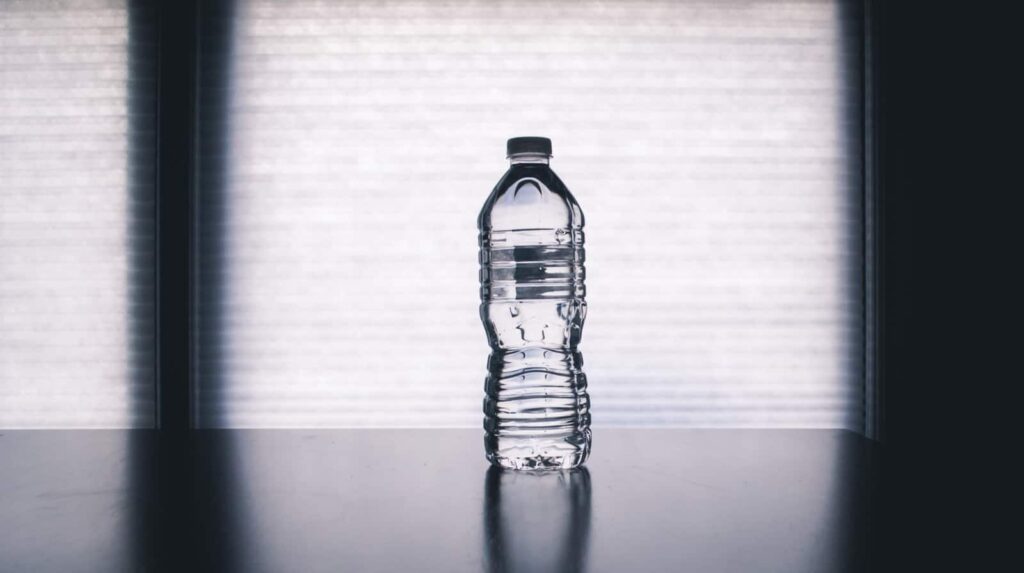
1. Propel Fitness Water
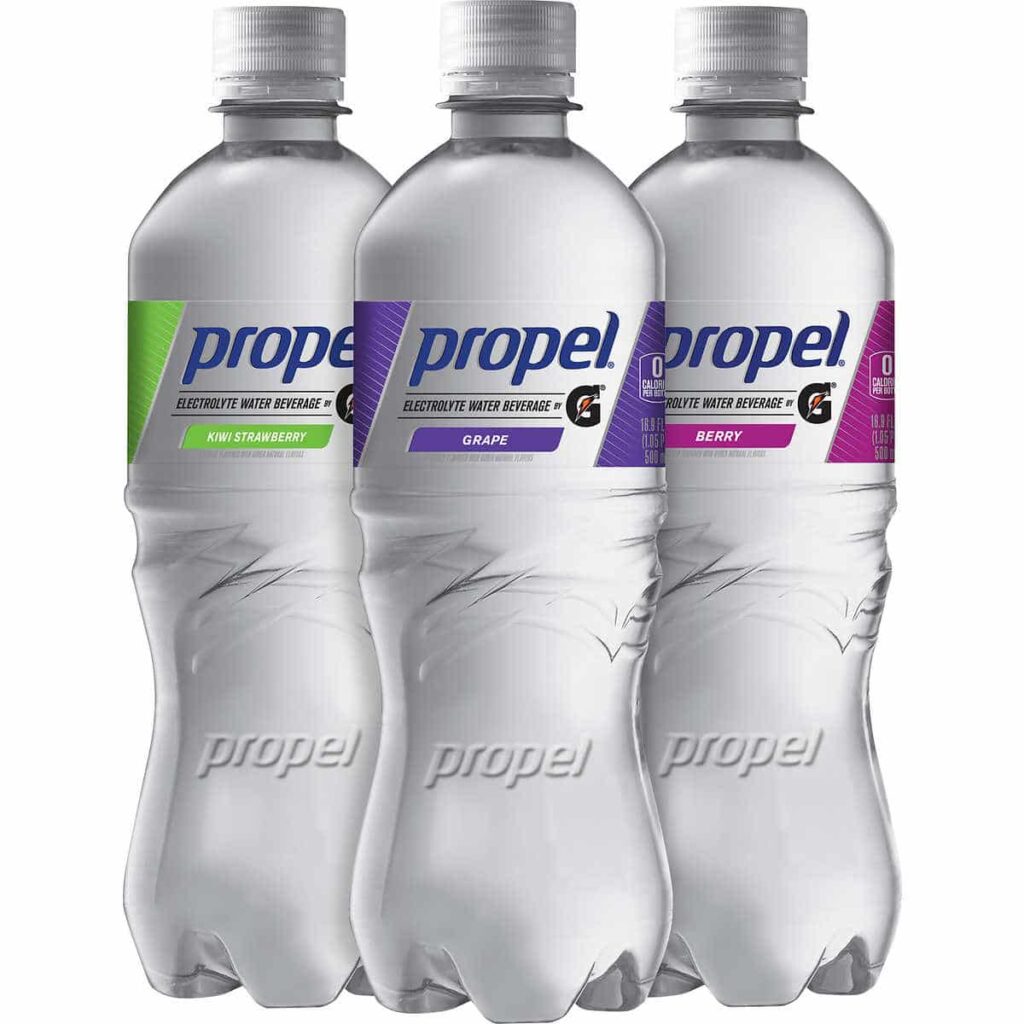
One thing we don’t like with Propel is that the ingredient list is so long that we almost don’t like to consider it as water. This water claims they’re packed with antioxidants, vitamins, and electrolytes. However, they’re also filled with sodium, preservatives, and artificial sweeteners. So for us, you’re better off drinking plain water and considered the worst bottled water.
2. Dasani

Many customers were horrified to find out this drink was stinky. Some describe it as a drink with some wine mixed with sulfates. That alone won’t make me wanna try this, and definitely on our worst bottled water list.
3. Aquafina
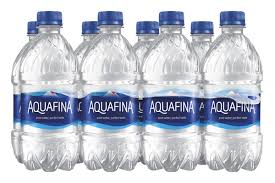
While this one from Aquafina is drinkable, it was tested to be acidic. We all know alkaline water is superior, so it’s on our worst bottled water list. Or at least have something neutral. This comes with a dusty taste with some notes of salt and minerals. However, this remains to be cheap water that helps quenches your thirst!
4. Penta
This is deionized, processed, demineralized, and acidic. It has almost everything you wouldn’t want in your water and probably the worst water brands! It also comes with an annoying scent. It’s not healthy for you!
5. Nestlé Pure Life

While this bottled water is not the worst on our worst bottled water list, we still expect so much from such a reputable brand. It comes with a clean and neutral taste with not much flavor.
6. Poland Spring
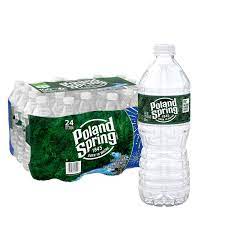
This bottled water for Poland Spring is quite terrible, to be honest. New Yorkers seem to disagree and think this is excellent water, but to most, it’s just not. Personally, it gives off a horrible bitter aftertaste.
The risks of bottled water consumption
Arsenic
45 bottled water brands were tested, and the study found concerning levels of arsenic in Starkey Spring Water which has been available at Whole Foods for five years. Arsenic is a toxic metal, so any water with high amounts of this metal should not be consumed.
Starkey Spring has 3x the amount of arsenic compared to other brands, so it’s safe to stay away from it. This isn’t the first time Starkey was found to have high arsenic levels, yet they seem not to care enough.
James Dickerson, Ph.D., CR’s chief scientific officer, said that a bottle should not do enough to harm you. Furthermore, he states, “regular consumption of even small amounts of the heavy metal over extended periods increases the risk of cardiovascular disease, certain cancers, and lower IQ scores in children, and poses other health issues as well.”
Plastic particles
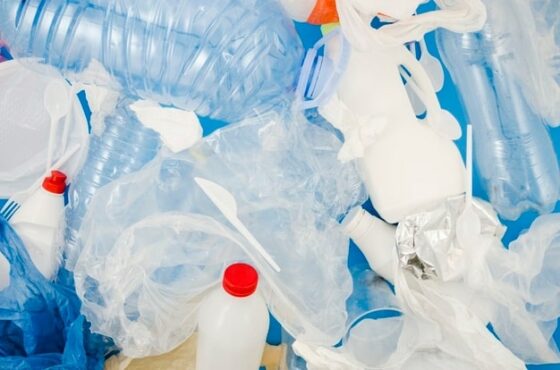
In 2018, 259 bottled glasses of water were subjected to a test, and 93% contained “microplastic” synthetic polymer particles. To our horror, the study’s author, Mason, stated that some were even visible to the naked eye without a microscope or a magnifying glass.
With the 11 famous brands in the study, 325 microplastic particles per liter were found. Nestlé Pure Life disappointingly had one bottle with 10,000 microplastic particles per liter. While insufficient data is available to identify the risk of plastic exposure to human health, it’s not difficult to think why this is not the healthiest thing to do.
Frederick vom Saal, a biological sciences professor at the University of Missouri, told Time: “In animal models and epidemiological studies in humans, we have a correlation between plastic exposures and known health hazards.”
Now the Center for International Environmental Law released data that states that plastic is a risk to human life at every stage of its life cycle. Microplastics are found to be risks associated with cancer, cardiovascular diseases, and autoimmune problems.
E. coli
E.coli infesting food is no new news, but put that scenario to bottled water, and the narrative is even worse. In May 2018, Sweet Springs Valley Water Company was found to have sourced its water from a supply of contaminated and harmful substances. Despite this, Sweet Springs chose not to stop the production even after the bacteria was found.
In June 2015, 14 bottled water brands were recalled due to E. coli contamination. This included water bottles from 7-Eleven, Shoprite, and Niagara.
Mold
In December 2017, the FDA released a consumer alert stating that Comforts For Baby’s Purified Water with Fluoride had mold, Talaromyces Penicillium, to be exact. It’s a mold that triggers allergic reactions and causes fever once touched or inhaled.
Harmful chemicals or carcinogens
A study published in October 2018 in the Journal of Water Research found that phthalates are often found in bottled water. This is a harmful substance found to have an association with increased cancer risk. The data also revealed that while the concentrations aren’t that bad, they may still lead to estrogenic effects in the long run.
Chloroform and bromoform, types of trihalomethanes, are also carcinogenic, yet they are commonly used as solvents or refrigerants. The Environmental Working Group reported in 2008 that various trihalomethanes were found in bottled water brands such as Sam’s Choice and Acadia.
Another suspected carcinogen, bromate, is sometimes found in bottled water. As per the Consumer Reports, a citation was issued to a Colorado bottler, Deep Rock Water Company, due to their water having 20 parts per billion of bromate, twice the legal limit. What’s even surprising is that no recall and re-testing were done to address the issue.
The water label glossary
There are different terminologies you can find in bottled water. To know what goes into your body, you better familiarize yourself with these nomenclatures.
Artesian
This is water sourced from a well that taps a confined aquifer, an underground rock, or a sand layer with water. An example is the Fiji Natural Artesian Water.
Distilled
Distilled water has gone boiling and is then re-condensed from the steam to take it back to liquid form. The process removes minerals and microbes, so it’s no surprise that this results in flat-tasting water. An example is the Glacéau Smartwater.
Mineral
This type of groundwater naturally has at least 250 parts per million of dissolved solids. The minerals and other trace elements are automatically present upon emerging from the source. An example is Calistoga.
Public Water Source (PWS)
This is also known as your tap water or your municipal water supply.
Purified
With this type of water, the source doesn’t matter as long as the water undergoes treatment to eradicate the pathogens and chemicals based on the standards set by the U.S. Pharmacopeia (USP). The water must not contain more than 10 parts per million of dissolved solids. There are various purification methods; some are distillation, deionization, and reverse osmosis. Examples are Aquafina and Dasani.
Sparkling
Sparkling water contains carbon dioxide equal to how much it had when it was sourced. The carbon dioxide taken away during the treatment is placed back in this type of water. An example is Perrier.
Spring
As the term implies, spring water is sourced from an underground formation that naturally flows to the Earth’s surface. It is collected either at the spring itself or through a borehole tapping the under formation, the aquifer. Examples are Evian and Arrowhead Mountain Spring Water.
Conclusion
My most recommended water bottles are Mountain Valley Spring Water, Evian, Voss, and Fiji. But always remember that there are options other than bottled water, especially because all these plastics are bad for the environment.
You can get a countertop water filter or a water pitcher and use tumblers to bring your clean water out.
There you have it, our worst bottled water list.

Jay
Jay is a health and wellness enthusiast with expertise in water quality and nutrition. As a knowledgeable advocate for holistic well-being, Jay successfully manages Type 2 Diabetes through informed lifestyle choices. Committed to sharing reliable and authoritative insights, Jay combines firsthand experience with a passion for enhancing health."
